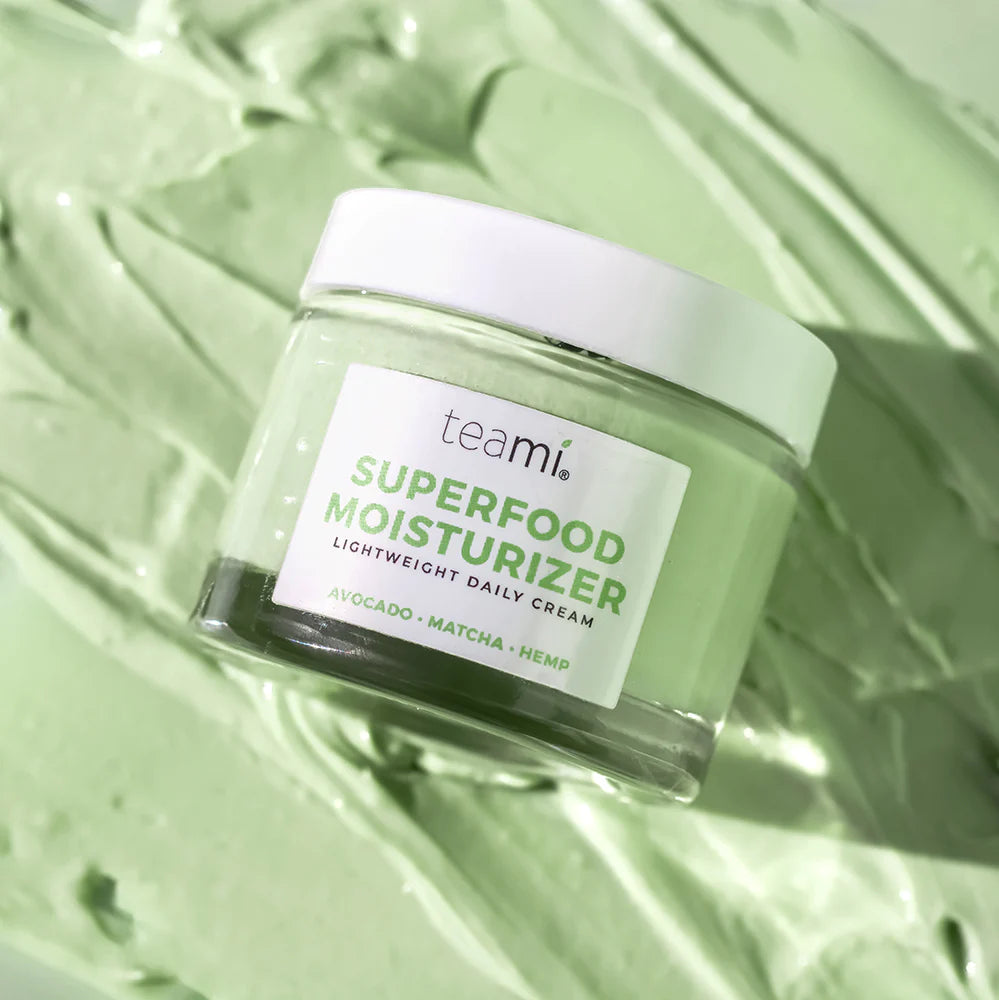FAQ: What Are The Best Treatments for Armpit Eczema?

Armpit eczema can cause some of the most uncomfortable flare-ups. This happens because of all the movement and rubbing in that area - you've probably felt it. It gets in the way of your activities and can be quite a pain - literally!
Armpit eczema means the skin in your underarm area gets red, itchy, and dry. That adds up to discomfort and irritation.
You're not alone in this, which is a plus. It's a familiar condition, and there are a few helpful treatment options. You have access to some awesome ways to get the relief you need. We'll talk about the best ways to treat it.
Let's just jump in and find what might be best for you!
What Are The Causes of Armpit Eczema?
Armpit eczema, which is known as atopic dermatitis, comes from a few sources like genetics, allergens, and irritants. If one of your parents had eczema, you could end up dealing with it, too. That's because of a filaggrin gene change. This change affects your skin's ability to hold onto moisture, which makes it dry and more open to irritants. Dry skin is more likely to get irritated.
Soaps and detergents can be a real headache. The harsh things in them strip away your skin's natural oils. This leads to dryness and irritation. Anyone who has dealt with dry skin knows it can feel like sandpaper under your arms. It's a pretty unpleasant experience. Then, there's the issue with clothing. Tight synthetic fabrics or anything scratchy like wool can make things worse. Think about that itchy sweater you regretted wearing all day - now, imagine that irritation under your arms.
Sweat plays an important part, too. Heat and sweating in your armpits can make eczema worse. Armpits naturally get sweaty. That leads to moisture buildup. This can make a perfect environment for bacteria and yeast. Ever seen your skin getting itchier after a workout? That might be why.

Deodorants and antiperspirants could be part of the problem as well. Some have allergens like fragrances or parabens, causing contact dermatitis. It looks and feels quite a bit like eczema. Stress can also make your symptoms worse. Have you ever had a rough week and seen your skin acting up more than usual? Stress can do that.
There's a familiar myth that eczema is contagious. You can't catch it from someone else. It is also not really diet-related. Diet can change it, but it's not the main cause. Family history and your environment play a bigger role.
Handling armpit eczema could need a decent moisturizer and sometimes corticosteroids. A friend of mine swears by a fragrance-free moisturizer right after showering. It helps lock in moisture and keeps the skin less irritated. Trying this easy step could help you cut down on the itchiness.
How To Identify Armpit Eczema Symptoms?
Armpit eczema brings a few familiar symptoms your way: itching, redness, and rash. You could also see dry, cracked skin or small, raised bumps. Sometimes, these areas may ooze and crust, which adds to your discomfort. Knowing these eczema symptoms helps you place them the right way, but don't mix them up with other skin problems like fungal infections. Those come with itchy, swollen, and scaly skin. Contact dermatitis, on the other hand, shows up with a red, itchy, blistered rash. This difference matters quite a bit because the right diagnosis is so important.
Chafing sometimes results in red, raw, stinging skin. Heat rash, though, appears as itchy, prickly, red, and slightly raised patches. Finding the difference really matters. Getting it right will make sure that you get the right treatment - misdiagnosing your skin problem can cause bad treatments, possibly making your symptoms worse. That's a situation you want to stay away from.

So, what's the best way to check your symptoms? Start with watching the rash's appearance and spread. Keep track of how long the symptoms last and how often they appear. Changes in skin color or texture give you big hints. If your rash worsens after deodorants or antiperspirants, that's something you should take into account. These observations help you better find out what's going on with your skin.
Seeing a doctor is the next step if your symptoms persist or get worse over time. Watch for infection signs, like fluid oozing or yellow crusts - these signs mean you need to look for medical advice faster. While over-the-counter treatments can help, they aren't always enough. If home remedies or OTC meds don't help with your skin, talking to a healthcare professional is the next logical step. Getting a professional opinion is always a good idea.
You could also note your skin becoming raw and more sensitive because of scratching. This can smooth the path for other infections. Swollen lymph nodes in the area could also signal a more serious infection. Keeping an eye on these signs helps you stay away from more trouble later on. Finding these changes can honestly save you from more issues down the road!
Over-the-Counter Topical Treatments
You'll find lots of over-the-counter treatments for armpit eczema, like hydrocortisone creams, moisturizers, and calamine lotions. Hydrocortisone creams are really helpful for reducing irritation, itching, and inflammation. You should apply them one to four times a day for up to a week. To get the best results, follow the label directions closely. But hydrocortisone does come with side effects - you could experience dry or cracked skin, acne, or changes in skin color. It's a good idea to talk with your pharmacist for some personalized advice.
For moisturizers, look for products that hydrate and relax dry skin. Important ingredients to look for are aloe, glycerin, and mineral oil. You should apply moisturizers a few times a day - especially after bathing or showering. It's a bit of a commitment, but keeping your skin hydrated really helps. Some people also swear by calamine lotions - these can relieve itching and irritation, even though they might not be as helpful for bad cases. Following the label instructions is a must to get the best results.
Have you ever thought about antifungal treatments? They're made to treat fungal infections like ringworm, which can sometimes be mistaken for eczema. Check the instructions on the label to know the best application frequency and time.

Popular OTC products like hydrocortisone creams can help reduce inflammation, but they come with possible side effects. Moisturizers are gentle and hydrating - even if they don't give you immediate relief. Calamine lotions or creams can be relaxing but sometimes fall short in more extreme cases. Antifungal creams work well for specific fungal infections but might not suit all skin types.
Getting opinions from others who have used these treatments can be pretty helpful. I like reading reviews to see how well these products work for different people. Reading the pros and cons is always helpful.
Also, have you spoken with a pharmacist yet? Their expertise can help you find the best OTC treatments for your specific condition. Talking about potential side effects and interactions with other medications is also really important.
Natural Remedies To Try
Let's go over natural remedy options like aloe vera, coconut oil, and oatmeal baths. I've looked into their pluses, and I'll share some plans along the way.
Aloe vera stands out as an eczema remedy - and for good reasons. It soothes and moisturizes your skin, and it also helps to cut down on inflammation. To use it, just put the gel directly on your eczema a few times a day. Studies show it helps reduce inflammation and helps with hydration - but watch out for rare allergic reactions. If irritation starts, stop it right away.
Coconut oil could already be in your kitchen, and it's also great for your skin. Similar to aloe, it moisturizes and soothes while reducing inflammation. Apply it to the affected areas throughout the day. Research shows coconut oil can help with your skin condition and ease symptoms - some people might be allergic, so keep an eye out for any bad reactions.

Oatmeal baths can also help reduce inflammation, relax itching, and moisturize your skin. To get these benefits, add colloidal oatmeal to lukewarm bath water and soak for about 5-10 minutes. Make sure to pat yourself dry afterward and then put on a good moisturizer. Studies confirm it helps reduce itching and inflammation. It's easy - and no known allergic reactions are reported.
Sunflower oil deserves a mention, too. It works by moisturizing and relaxing your skin, sort of like the other options. You can apply it a few times a day, just like coconut oil. Research supports that sunflower oil moisturizes and soothes the skin. If you note any irritation, it's best to stop.
Evening primrose oil is another option. Known to calm irritated skin and reduce inflammation, you can apply it directly as needed. It has shown promising effects in studies - but like the other oils, there's a chance of allergic reactions, so be cautious.
If you're feeling overwhelmed with options, start with what sounds attractive to you. It's also a good idea to talk to your doctor before trying new treatments - especially if your case is extreme or you are on medication. Patch tests can help you stay away from potential allergic reactions.
Natural remedies give you great options for handling armpit eczema. Aloe vera, coconut oil, and oatmeal baths are among the top suggestions - try them out, see what works for your skin, and stay alert for any reactions.
When To See A Doctor?
Seeing a healthcare professional will really help you deal with regular or extreme armpit eczema. When over-the-counter treatments just don't work well enough - or if the eczema gets infected - you need to call the doctor. They can prescribe stronger steroids or antibiotics. This gives you a more customized way to handle your symptoms. Personalized plans can really keep those flare-ups away.
Going to the doctor is a big deal in some situations. Just to give you an example, if the rash covers a big part of your body or comes with blisters or a fever, don't ignore it. Waiting could make things worse! Imagine finding out that an easy prescription change could make you feel better.
Have you ever had a rash that spreads fast or hurts quite a bit? That's a red flag. Eczema can sometimes spiral out of control before you notice. If it bleeds, oozes, or has pus, you really need expert advice to stay away from bigger health issues.
Doctors also come in handy when eczema shows up in sensitive areas like around your genitals, mouth, or eyes. Just thinking about it sounds uncomfortable, right? Eczema in these places means it's even more important to get special treatment. It's not something you want to manage alone.

Sometimes, the rash just won't respond to OTC or home remedies - especially if it leads to thickened or crusty skin. It's really frustrating when nothing seems to work. Traditional creams and ointments might not be strong enough, and that's when prescription options can really help.
In more serious situations, if you get symptoms like cold hands and feet, shaking, stiff neck, confusion, or dizziness along with the rash, you need to call a healthcare professional right away. These extra symptoms can hint at other underlying problems that need to be handled faster.
Talking to your doctor about eczema could feel like a trouble, but think of it as a positive move. They can find out what's really going on and help you get the right treatment. So, next time over-the-counter treatments aren't enough - or you notice any of these signs - don't hesitate to look for professional help.
How To Prevent Armpit Eczema Flare-Ups?
You can treat armpit eczema with some helpful tips and changes to your habits. First, find out what triggers your eczema and stay away from those things. If you know what sets off your eczema, try to stay away from those triggers as much as you can. Think of it like solving a challenge. Once you know the pieces, it's easier to manage.
Moisturizing is another big habit. Put on lotion or moisturizer right after showers and throughout the day - especially in dry places. This can really make a huge difference. Stick to hypoallergenic products to stay away from irritation. It's an easy schedule that can bring you relief.
Wearing loose, breathable clothing can reduce friction and irritation. Cotton fabrics are good for this. Tight clothes might look nice but can cause problems for sensitive skin. Make comfort your priority.
Good hygiene plays an important part. Always wash new clothing and fabrics before wearing them to remove any leftover chemicals or irritants. Gentle cleansers are the way to go, and harsh soaps should be avoided. This small step can reduce skin irritation.
Choose gentle skincare products that don't have fragrances or additives. Always test new products on a small area of your skin before using them completely. This careful approach can avoid discomfort.

Keeping your environment clean can really help. Cleaning your home and workspace cuts back on your exposure to dust and other allergens. While it could feel like a chore, a cleaner environment will be good for your skin.
Handling stress is huge, too. Techniques like deep breathing or meditation can lower stress levels and reduce eczema flare-ups. Stress sometimes gets ignored - but honestly, tackling it can help with your general skin health.
Stay hydrated by drinking lots of water. Keeping your skin hydrated can help quite a bit. Dehydration makes eczema symptoms worse, so make water your favorite drink. Also, keeping your living spaces humid can help avoid dry skin. A humidifier keeps the air moist, which is good for your skin.
You can also try to adjust your shower schedule. Short, warm showers are best. Instead of rubbing your skin dry with a towel, just pat it. This little change helps your skin keep moisture better.
One more thing: choose your deodorants carefully. Stay away from ones with irritants like aluminum, lanolin, and parabens. Fragrance-free options reduce the danger of allergic reactions - being mindful of what you put on your skin helps you stay away from unnecessary flare-ups.
Finding The Perfect Blend
Living with armpit eczema can really be tough, but making some lifestyle and skincare adjustments can change things quite a bit. Moisturizing, when you pick the right clothes, and staying away from triggers can help you manage flare-ups better. Have you thought about how easy changes - like switching your deodorant or choosing gentle cleansers - can make a difference in your eczema experience? It's worth trying out these strategies. They could cause smoother days ahead for you.
It's also pretty big to see how stress management plays an important part in keeping your skin healthy. Things like meditation, yoga, or even just taking a few minutes each day to relax can bring down your stress levels. And guess what? This could just ease your eczema symptoms, too. Isn't it interesting how our mental health connects with our skin health? This example shows how important a well-rounded approach to wellness is.

Mixing relaxing practices and treatments with your wellness routines is another big step. That's where Teami comes in.
We have a number of great teas focused on different health details. You can find kinds for weight management, better sleep, and improving your immune system. We have blends that are awesome for your body and skin, too. These can help you look and feel healthier. Feel like checking it out? Visit our store today and find the perfect natural blend to support your health!
Subscribe to our Newsletter
Subscribe to our newsletter and get 10% off your first purchase
 Instagram
Instagram



